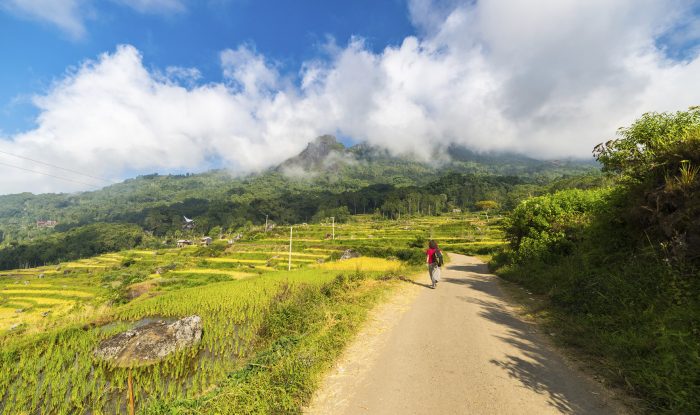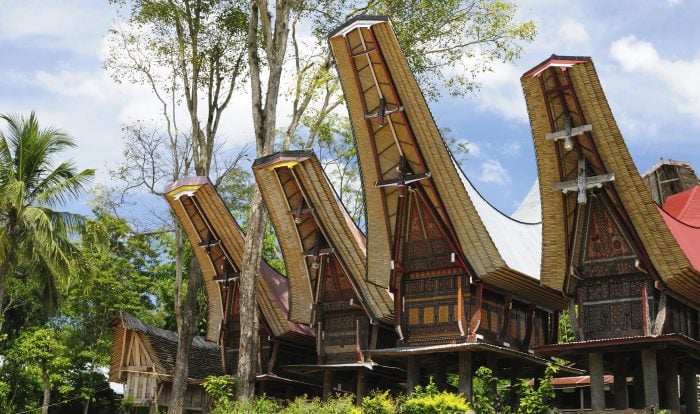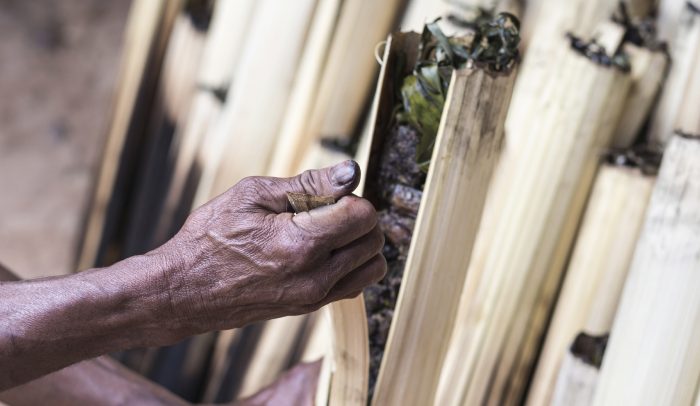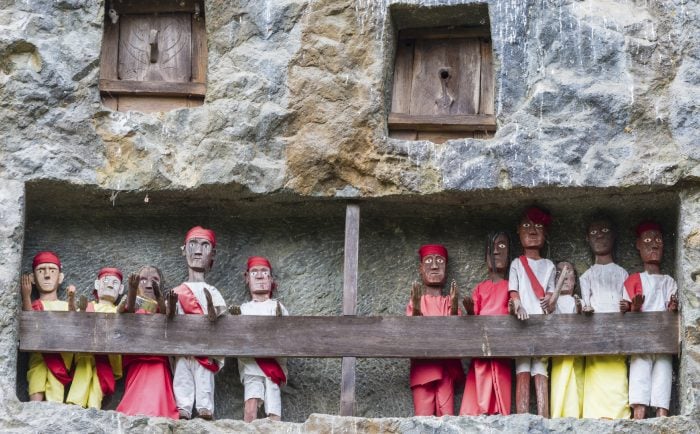On his journey across the island of Sulawesi, travel writer Stephen Lioy experiences Tana Toraja’s ancient ancestral ways.

From Rantepao, the largest town in Sulawesi’s Tana Toraja region, the verdant mountains that dominate the horizon beckon after too much time in the country’s hectic larger cities.
Exploring this mountainous landscape, and hiking the trails that connect the small villages, is every bit the escape to nature that tourists expect of rural Indonesia. But in this corner of the country – that’s equal parts animist and Christian, celebratory and macabre – it’s the Torajan culture that leaves the strongest impression.
As you pass through traditional Torajan villages, what stands out most is the people’s appreciation of life, as children play in the shade of towering Tongkonan houses, the roofs of which are said to be curved in homage to the horns of water buffalos; an animal that plays a central role in Torajan culture.

In these otherwise quiet villages, it isn’t unusual to hear song and dance drifting up from the valley below, but while this vivacity invites travellers in to explore, it is death that actually plays a more important role in Tana Toraja. Despite mass conversion to Christianity during Dutch occupation, the traditional religious customs ‘Aluk To Dolo’ still dictate the treatment of death in the area, and these burial rites are what make Tana Toraja so popular with tourists.
Inside those same high-roofed houses, the dead are embalmed and lie in repose – often for months or years on end – until relatives can gather together, with enough money raised for an elaborate funeral ceremony.
In these otherwise quiet villages, it isn’t unusual to hear song and dance drifting up from the valley below.
During the dry season of July to October, travellers often crowd into these, admittedly gory, multi-day funerals as water buffalo are slaughtered in preparation for a communal feast. Like so much of Torajan life, these funerals involve singing, dancing and eating; all under the unseeing gaze of a portrait of the deceased, and often alongside a baubau statue.
In the ‘Way of the Ancestors’, the deceased are still an active part of the community, keeping a watch over a village’s affairs. So, while their bodies lie in cliffside coffins or are carried deep into nearby caves, a baubau carved in their likeness is placed in a position prominently overlooking the village.

Luckily, Torajan culture holds guests in high regard and, despite the number of international travellers that visit the villages near Rantepao, those who act respectfully and offer a token gift are welcome to observe the funerals and visit burial sites.
In more remote areas, this hospitality often extends to invitations to spend the night in a Tongkonan and try local foods like palm wine and pork-filled bamboo tubes. While some of these small settlements are accessible by car, they’re best visited on foot via the small unmarked trails winding over the hills that separate them.
In more remote areas, this hospitality often extends to invitations to spend the night in a Tongkonan and try local foods like palm wine and pork-filled bamboo tubes.
You can go it alone and almost certainly receive a warm welcome and a place to stay for the night. But, to learn more about rural Torajan culture, set out with a guide from Rantepao, who can not only show you the easiest or most scenic paths between villages but also translate those questions that inevitably crop up during a homestay in Tana Toraja.
By visiting the less-prosperous villages, while they may not have the same elaborate baubau collections as the areas closer to Rantepao, you’ll get an insight into daily life that’s largely unaffected by the tourism of Tana Toraja. And, if you happen to stumble across a burial ceremony while trekking, be respectful by offering a small gift – such as sugar – to your hosts. The ancestors are watching, after all, and here, their way always holds sway.
Tana Toraja is best reached by car on the 300-kilometre road from Rantepao to Makassar, the nearest major town and airport.










